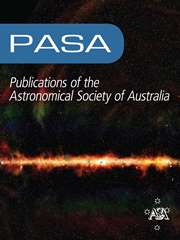No CrossRef data available.
Article contents
Effects of angular scattering and H+p, H+H collisions on the properties of interstellar atoms in the heliosphere
Published online by Cambridge University Press: 14 April 2025
Abstract
Interstellar hydrogen atoms (H atoms) penetrate into the heliosphere through the region of the solar wind interaction with the interstellar plasma due to their large mean free path. Resonant charge exchange of H atoms with protons has been considered as the main interaction process between the components. In the majority of models, other processes like elastic H-H and H-p collisions are not included. Moreover, it has been assumed that the velocities of the colliding particles remain unchanged during charge exchange. This corresponds to the scattering on the angle of π in the centre mass rest frame.
The goal of this paper is to explore effects of the elastic H-H and H-p collisions as well as the angular scattering during charge exchange on the distribution of the interstellar atoms in the heliosphere and at its boundary.
We present results of simple (and therefore, easily repeatable) kinetic model of the interstellar atom penetration through the region of the solar and interstellar winds interaction into the heliosphere. As a result of the model we compute the distribution function of the interstellar atoms at different heliospheric distances. Further, this distribution function is used to compute its moments and potentially observable features such as absorption and backscattered spectra in the Lyman-alpha line.
Results show that there are differences in the behavior of the distribution function when considering elastic collisions and the changes in the moments of the distribution achieve 10%. Therefore, in cases where precise calculation of H atom parameters is essential, such as in the modeling of backscattered Lyman-α emission, elastic collisions must be considered.
Keywords
- Type
- Research Article
- Information
- Creative Commons
- This is an Open Access article, distributed under the terms of the Creative Commons Attribution licence (https://creativecommons.org/licenses/by/4.0/), which permits unrestricted re-use, distribution and reproduction, provided the original article is properly cited.
- Copyright
- © The Author(s), 2025. Published by Cambridge University Press on behalf of Astronomical Society of Australia


